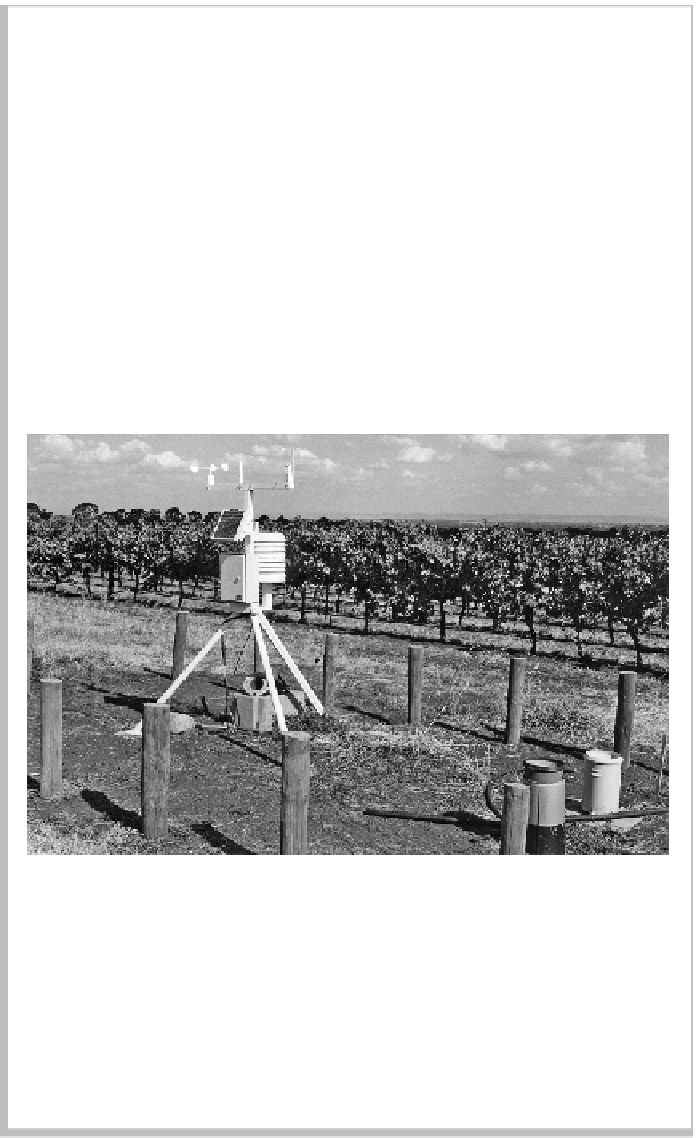Agriculture Reference
In-Depth Information
Box 4.7 Estimating Evapotranspiration
he
PET
of a vegetated soil surface depends on the radiant energy absorbed, the
relative humidity of the air, and the wind speed. These are called meteorological or
weathervariables,thevaluesofwhicharemeasuredwithaweatherstation(igure
B4.7.1).hecalculationof
PET
(alsocalledreference
ET
)assumesareference
crop of green grass 12 cm high and completely covering the soil surface, with an
unlimited supply of water. Data for calculating
PET
(measuredinmillimeters
perday)aresuppliedbymeteorologicalservices.InAustralia,forexample,the
SILOclimatedataset(
www.longpaddock.qld.gov.au/silo/about.html)
ishosted
bythecurrentDepartmentofScience,InformationTechnology,Innovationand
the Arts of the Queensland state government. The weather variables range from
rainfall, temperature, solar radiation, and so on to
PET
calculated by five different
methods. The data provided are for individual Bureau of Meteorology stations
Figure B4.7.1
Exampleofaweatherstationinavineyard.(White,2003)
A simple way to measure evaporation is with a shallow tank of water
exposed to wind and sun, such as the widely used class A pan shown in figure
B4.7.2. The pan is raised above the soil surface to allow air to circulate and
sominimizeoverheating.hedailyfallinwaterlevel(afterallowingforany
rain)ismeasuredtogivethepanevaporationrate
E
p
(measuredinmillimeters
perday).Panevaporationratesareusuallyabout20%greaterthan
PET
at the
same site.
(continued)

